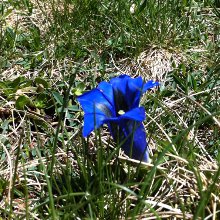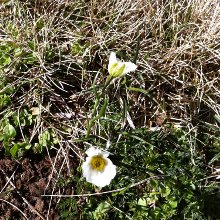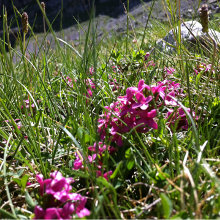Flora
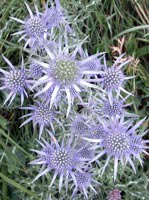
With over 3000 recorded plant species, including 180 endemic, it’s not surprising that the spring months of June and July are a spectacular festival of wild flowers, trees and plants, in the central Pyrenees. The pastures and mountainsides are completely carpeted with a variety of stunning plants and flowers, creating a cacophony of colour. This is one of our favourite times of year to walk out here. Be warned though – walking holidays at this time of year can be slow at times, as people try to capture the beauty of flower-filled meadows and mountains on camera!
We’ve listed and described some of the plants and flowers you are most likely to see while walking in the French High Pyrenees, although, of course, this list is not extensive. There are also several uniquely Pyrenean species such as the Pyrenean saxifrage, the Pyrenean iris, the Pyrenean blue thistle, and the ramonda, which can only be found here, in the Pyrenees.
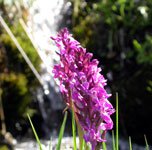
The Pyrenean tree-line can reach as high up as 2600m on the southern slopes of the Neouvielle massif. The highest altitude trees are the Pyrenean mountain pines (pinus uncinata or Pinus mugo), with their distinctive hooked tips on their cone scales. Black pines (pinus negra) can be found up to 2100m and then as you move lower down you can find Scots pine, beech, silver fir, birch and poplar. Below 1000m, the trees vary even more, with maple, hornbeam, sweet chestnuts and oaks.
Trumpet Gentiane, Gentiana kochiana (also known as Gentiana acaulis) (French: Gentiane de Koch)
This small gentian is native to central and Southern group and can be found here in the Pyrenees up to 3,000m. It has evergreen leaves which form a rosette, from which the trumpet shaped flower emerges. A perennial plant you can often see its blue flowers and their olive-green throats basking directly in the spring and summer sun.
Sundew or round-leaved sundew Drosera rotundifolia
This carnivorous plant has its basal leaves arranged in a rosette, with a long stem that ends in a white or pink flower. The average plant has a diameter of 3 to 5 cm, with the flower having five petals and slender, tapered, light brown seeds. Thriving in wetlands, you can find it in sunny places.
Pyrenean Buttercup Ranunculus pyrenaeus
One of the first flowers of the spring, the Pyrenean Buttercup can sometimes be seen before the snow has even melted!
Rose Daphne Daphne cneorum
This shrub is named for it’s smell rather than appearance, as it gives off a sweet and very rose-like aroma.

